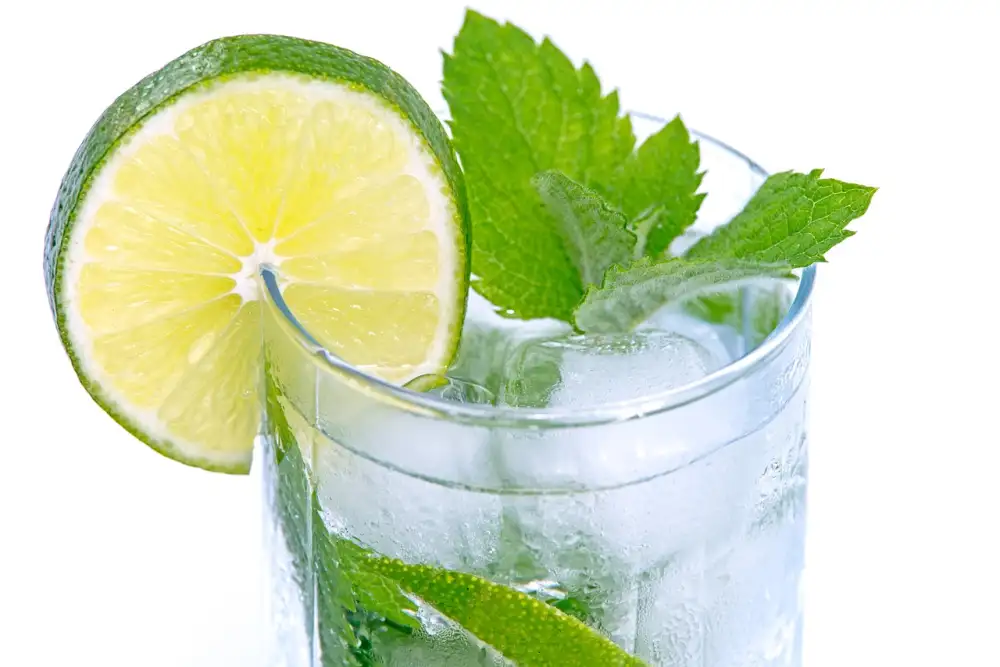Club Soda vs Tonic Water: Exploring the Differences in Carbonated Refreshment

When it comes to carbonated refreshments, club soda and tonic water are two popular choices that often find their way into various recipes. While they may seem similar at first glance, there are distinct differences between these two beverages. Understanding the unique characteristics of club soda and tonic water can help you make informed decisions when incorporating them into your culinary creations. In this article, we will explore the definition, composition, uses, and benefits of both club soda and tonic water in recipes. So let's dive in and uncover the secrets behind these fizzy wonders!
Definition and Composition of Club Soda
Club soda is a type of carbonated water that is commonly used as a mixer in various cocktails and mocktails. It is essentially plain water that has been infused with carbon dioxide under pressure, resulting in the formation of bubbles. The composition of club soda typically includes water, carbon dioxide, and added minerals such as sodium bicarbonate, potassium sulfate, and sodium chloride. These minerals give club soda a slightly salty taste and contribute to its fizzy texture. The presence of carbon dioxide gives club soda its characteristic effervescence, making it a refreshing beverage option for many people.
Uses and Benefits of Club Soda in Recipes
Club soda, with its fizzy and refreshing nature, is not only a popular beverage but also a versatile ingredient in recipes. Its effervescence adds a light and airy texture to dishes, making it an excellent choice for batters and doughs. Club soda can be used as a substitute for water or milk in pancakes, waffles, and even cakes, resulting in a fluffier texture. Additionally, it can be used to make crispy tempura batter or light and airy tempura-style vegetables. The carbonation in club soda also helps to tenderize meat when used as a marinade or brine. Furthermore, club soda can be added to cocktails and mocktails to provide a refreshing fizziness. Its neutral flavor allows it to enhance the flavors of other ingredients without overpowering them. In summary, club soda's uses in recipes are vast - from improving texture to enhancing flavors - making it an essential ingredient for any recipe enthusiast's kitchen.
Definition and Composition of Tonic Water
Tonic water is a carbonated beverage that is commonly used as a mixer in cocktails. It is characterized by its bitter taste, which comes from the addition of quinine, a substance extracted from the bark of the cinchona tree. In addition to quinine, tonic water typically contains carbonated water, sweeteners such as sugar or high fructose corn syrup, and various flavorings like citrus oils and botanical extracts. The amount of quinine in tonic water is usually low, around 0.5% to 1%, giving it a distinct flavor profile. Tonic water is known for its effervescence and refreshing qualities, making it a popular choice for those looking to add a unique twist to their beverages.
Uses and Benefits of Tonic Water in Recipes
Tonic water, with its distinct bitter taste, is not just a refreshing beverage on its own. It also has numerous uses and benefits in recipes. One popular use of tonic water is in cocktails, particularly the classic gin and tonic. The bitterness of tonic water complements the botanical flavors of gin, creating a balanced and refreshing drink. Tonic water can also be used as a mixer in other cocktails like vodka tonics or tequila tonics.
In addition to cocktails, tonic water can add a unique flavor to marinades and sauces. Its slightly bitter taste adds depth and complexity to dishes like grilled meats or roasted vegetables. Tonic water can also be used as an ingredient in desserts, such as sorbets or granitas, providing a subtle bitterness that enhances the sweetness of the dish.
Aside from its culinary uses, tonic water has some potential health benefits as well. It contains quinine, which has been traditionally used to treat malaria. While the amount of quinine in commercially available tonic water is relatively low, it still provides a small dose of this natural compound.
However, it's important to note that tonic water does contain sugar and calories, so it should be consumed in moderation. Additionally, individuals with certain medical conditions or those taking specific medications should consult their healthcare provider before consuming tonic water.
Overall, tonic water offers a unique flavor profile and can enhance both savory and sweet recipes. Its bitter taste adds complexity to dishes while providing potential health benefits. So next time you're looking for an ingredient to elevate your cooking or mix up your cocktail game, consider reaching for a bottle of tonic water.
Comparison of Club Soda and Tonic Water in Recipes
When it comes to carbonated refreshments, club soda and tonic water are two popular choices. While they may appear similar, there are distinct differences between the two that can greatly impact the outcome of your recipes.
Club soda is essentially carbonated water with added minerals like sodium bicarbonate, potassium sulfate, and disodium phosphate. It has a slightly salty taste and is often used as a mixer in cocktails or as a base for homemade sodas. The bubbles in club soda can add a refreshing fizz to drinks and help enhance flavors.
On the other hand, tonic water is carbonated water that has been flavored with quinine, a bitter compound derived from the bark of the cinchona tree. It also contains sweeteners and citric acid to balance out the bitterness. Tonic water is most commonly known for its role in classic cocktails like gin and tonic. The distinctive bitter taste of tonic water adds complexity to drinks and pairs well with spirits.
In terms of uses in recipes, club soda is versatile and can be used in various ways. It can be used to lighten up batter for pancakes or waffles, resulting in a fluffier texture. Club soda can also be added to batters for fried foods like tempura or onion rings to create a light and crispy coating. Additionally, it can be used as a substitute for water or milk in certain baking recipes to add extra lift.
Tonic water, on the other hand, has more limited uses due to its distinct flavor profile. Its bitterness makes it less suitable for general cooking purposes but it shines when paired with certain ingredients. Tonic water can be used as an ingredient in marinades or glazes for meats like pork or chicken to add depth of flavor. It can also be incorporated into desserts like sorbets or granitas for a unique twist.
In conclusion, while both club soda and tonic water are carbonated refreshments, they have different compositions and uses in recipes. Club soda is a versatile mixer that can add fizz and enhance flavors, while tonic water's bitterness adds complexity to cocktails and certain dishes. Understanding these differences will help you make the right choice for your recipes and create delightful culinary experiences.
In conclusion, both club soda and tonic water are popular carbonated beverages that can add a refreshing twist to various recipes. Club soda, with its simple composition of carbonated water and minerals, is a versatile ingredient that can be used in cocktails, baking, and cooking. It provides a crisp and bubbly texture to dishes while enhancing flavors.
On the other hand, tonic water is distinctively different due to its addition of quinine, giving it a slightly bitter taste. It is commonly used in cocktails like the classic gin and tonic but can also be incorporated into marinades or sauces for a unique flavor profile.
When choosing between club soda and tonic water in recipes, consider the desired taste and effect on the dish. Club soda adds effervescence without altering flavors significantly, making it suitable for those who prefer a neutral carbonated element. Tonic water, with its distinct bitter taste, can bring complexity to certain dishes but may not be suitable for all palates.
Ultimately, the choice between club soda and tonic water depends on personal preference and the specific recipe at hand. Experimentation is key to discovering which carbonated refreshment best complements your culinary creations. So go ahead and explore the world of food wonders with these delightful fizzy companions!
Published: 18. 12. 2023
Category: Recipes



